If your Kitchenaid dishwasher not spraying water, that means the machine has some issues.
There are so many mechanical causes that can create dishwasher not spraying water problems. As a result, you can face dirty dishes.
That is why it is important to find out the possible reasons behind dishwasher not spraying problems.
Let’s drive onto the article to know the possible causes and how to fix them.
Kitchenaid Dishwasher Not Spraying Water
Typically a Kitchenaid dishwasher fails to spray water due to a faulty switch, clogged inlet valve, block chopper blades, arms, defective pump filter, and more.
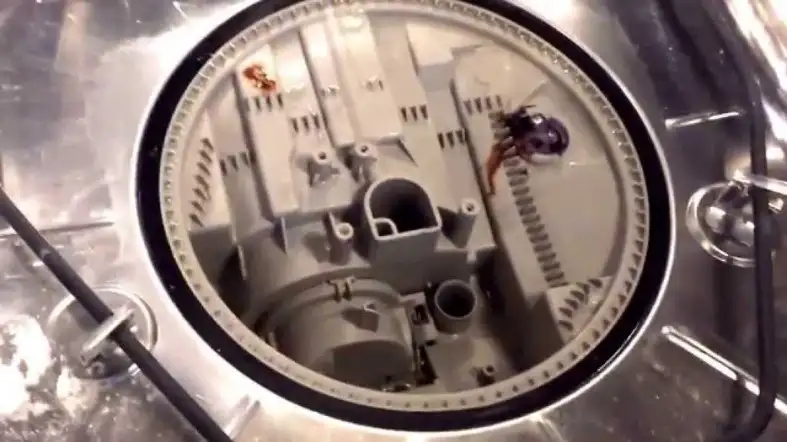
As several reasons cause spraying water problems, you need to identify the reason first. According to the dishwasher problems, you need to fix them.
So Let’s know the details reasons and solution.
8 Common Reasons Why Dishwasher Does Not Spray Water
A dishwasher failing to spray water is not a big issue. You can fix it yourself if you successfully figure out the reasons.
This article will help you to find out the causes and how to fix them. So that you can save money and the hassle of hiring a professional technician.
1. Switch problem
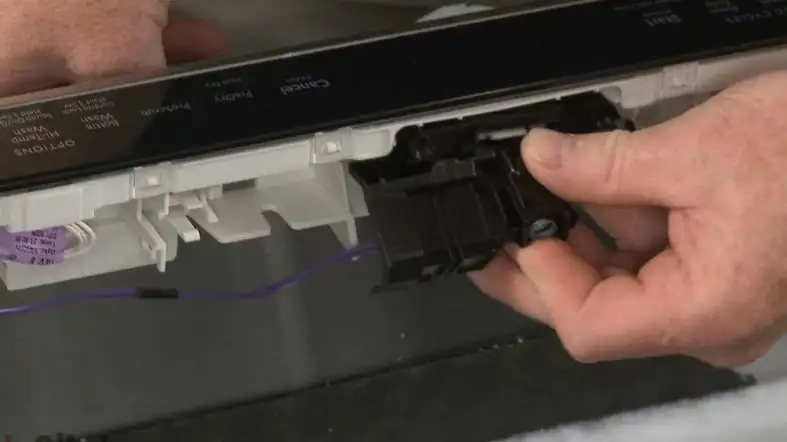
The Kitchenaid dishwasher comes with a floating switch. It prevents water floods during dishwashing.
This float switch can automatically turn off when enough water is entered into the dishwasher. So that you can avoid water overflow or standing water issues.
But if your switch is damaged, then the dishwasher fails to assume whether sufficient water enters the machine or not. It turns off without pumping proper water.
Solution:
- You can use a digital multimeter to inspect the float switch. Keep the multimeter reading 1ohm to test the microchip.
- Also, check whether it contains wear and tear issues or not.
- If the switch is defective, then replace it.
2. Block inlet valve
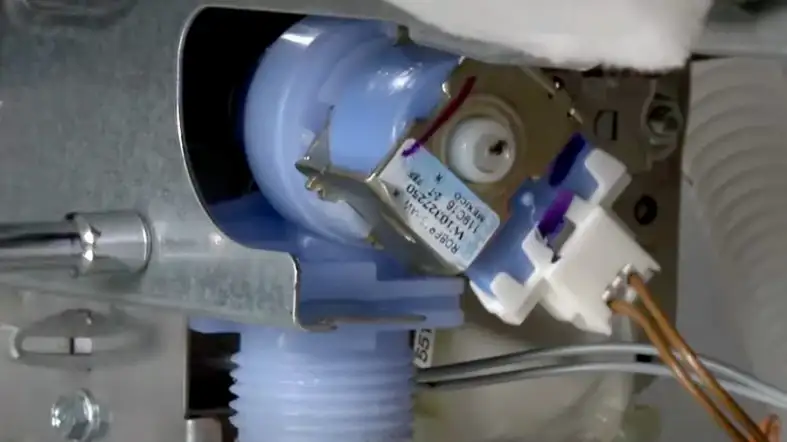
The water inlet valve is another important component of a dishwasher. The role of an inlet valve is to control water from the water line into the dishwasher.
When the inlet valve is open, water enters into the dishwasher. After refilling the machine, the inlet valve is closed to prevent overfilling.
But when the inlet valve is clogged or faulty, it fails to control the water flow efficiently. It can shut down without refilling water.
As a result, the dishwasher fails to spray water.
An inlet valve can be clogged due to stuck food residue, debris, or dirt. Even it can damage due to a short circuit or overuse of your machine.
A clogged inlet valve is a major culprit for ending up with dirty and smelly dishes. So check the water inlet valve carefully.
Solution: To fix a faulty water inlet valve, follow the below steps:
- Turn off the power switch and water supply line.
- Now open the dishwasher door to identify the water inlet valve.
- Wash the water inlet valve to unclog the components.
- If it is defective, replace it with a new one.
3. Clogged Blade
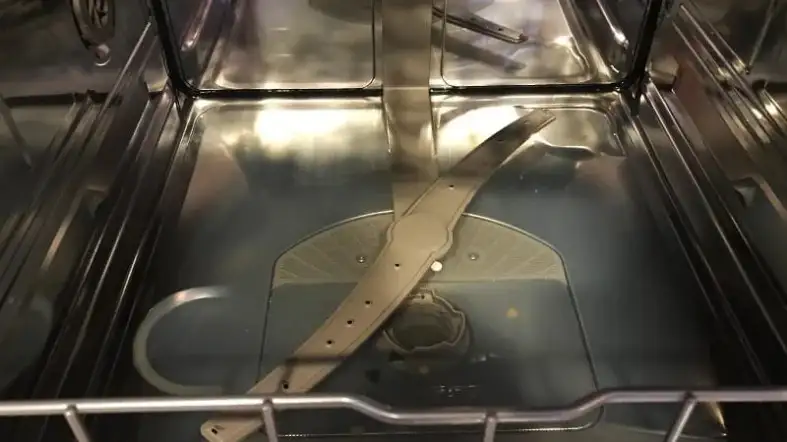
The chopper blade helps to cut remaining food particles to deliver sparkling clean dishes.
You need to kick out the finest food particle during every wash cycle. But when the chopper blade is jammed or faulty, it fails to cut it into the smallest pieces.
As a result, it becomes difficult to kick out food residue. Which is actually the culprit that forces the wash pumps to stop spinning.
So the whole functionality, including water spraying, is paused.
Solution: As it is a sharp blade, you need to be careful while troubleshooting this problem.
- First, turn off the water and power supply.
- Take out the access panel and other equipment situated near the chopper blade path.
- Now you can access the chopper blade. So check the blade to clean it. After unclogging the blade, try to rotate it.
- If it moves freely, that means the blade is jam-free. But if you notice the blade is broken that you should replace it.
After fixing, try a demo wash cycle to check if it works or not.
4. Faulty spray arms
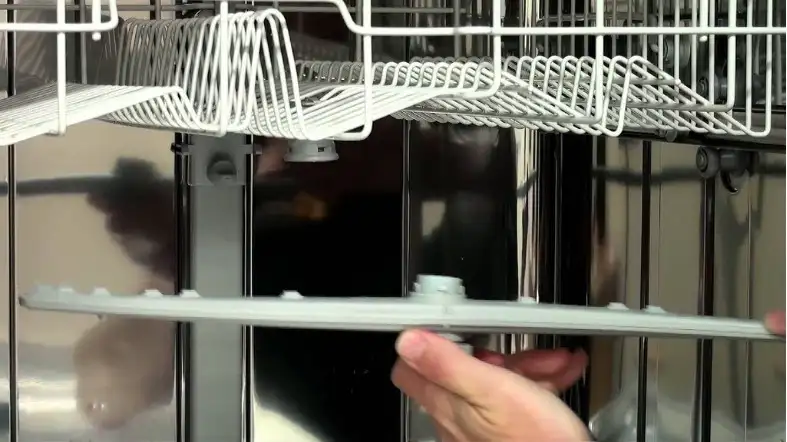
The Kitchenaid dishwasher comes with spray arms. This arm contains holes that distribute the water supply to clean the dishes inside the machine.
These spray arms need to rotate to spray water evenly on your utensils. But when the spray arms are faulty or clogged, they fail to spray water.
The remaining food particles, dirt, or debris can clog the arms. Sometimes a defective filter fails to pass water or debris.
Solution:
Fixing a clogged spray arm is simple. Let’s follow the below steps:
- Take a Torx to remove the screws or bolts that hold the spray arms.
- Now take out the spray arms and flush them with water to remove stuck food particles or debris.
- Take a soft brush to clean the dirt that is stuck on spray arms holes. You can also use a piece of wire or toothpick to clean the spray arms holes.
- Now flush the arms with white vinegar to get rid of clogs.
- Place it again in the dishwasher and reconnect the power supply and water source.
- Start the wash cycle to see the performance after fixing.
5. Jammed circulation pump
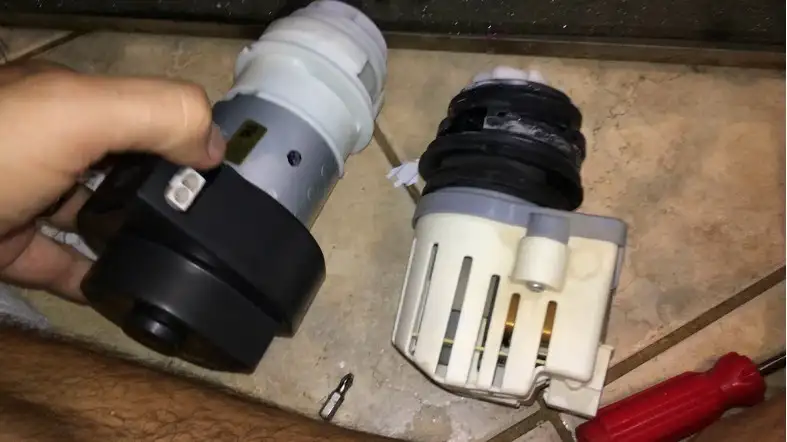
The Kitchenaid dishwasher utilizes a circulation pump to circulate water inside the dishwasher. But if the pump is jammed or defective, it unable to supply water.
As a result, spray arms fail to spray water. The circulation pump is jammed due to food residue, debris, or other issues.
Kitchenaid provides a filter to discard food debris. But if the filter is faulty, it can do the filtration. As a result, the circulation pump is clogged.
Solution:
To fix the circulation pump, it is important to get access to it.
- First, take out the access panel, connections, and hoses to reach the water circulation pump.
- Now take out the pump and wash it to get rid of a clog.
- Clean all the dirt, debris, or food residue. Use a brush to wipe out any stuck debris.
- Now spin the impeller to check whether it rotates freely or not. If it freely rotates, that means it is not blocked anymore.
- So re-connect your water circulation pump, access panel, and hoses.
6. A Faulty Circulation Pump
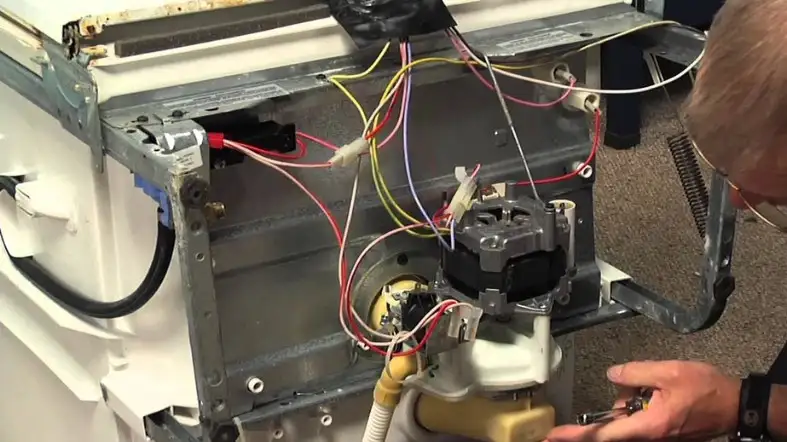
The Kitchenaid dishwasher depends on the circulation pump to function the machine efficiently.
If the pump is faulty, that means water circulation in different parts of a dishwasher is hampered. As a result, the spray arms won’t spray water on ugly dishes.
So you can get clean dishes when the circulating pump is not working. When you use a soap that takes long hours to dissolve can fail a circulation pump.
Or, due to long time use, it can be faulty. You need to troubleshoot the faulty pump to fix water issues.
Solution:
- First, detach the power and water supply.
- Now open the dishwasher door to remove all the nearby components to access the circulation pump.
- Then take out all the connectors and mounts to remove the pump.
- Place a new circulation pump and re-connect the relevant components.
7. Broken Or Jammed Pump Filter
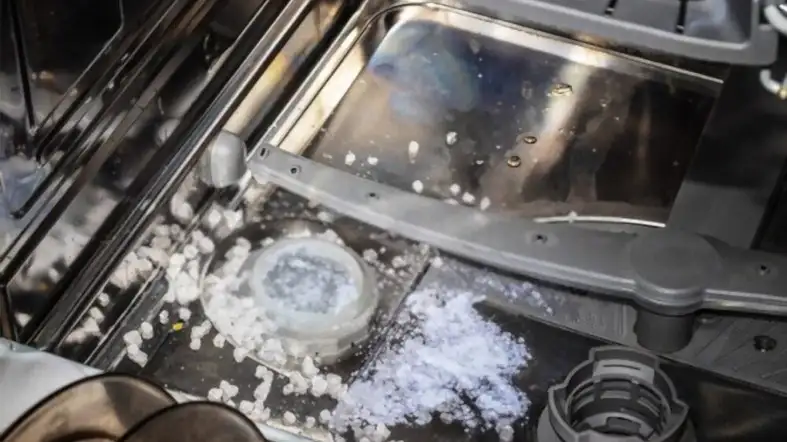
Kitchenaid brings a pump filter to pass soapy water from the tub to the arms.
Sometimes food residue can clog the filter. As a result, the spray arms fail to spray water.
Solution:
- Clean the filter using a vacuum cleaner.
- Or apply warm water to get rid of clogs.
You should clean the pump filter twice a year to avoid clog issues.
8. Overload Dishwasher
Sometimes we put a large number of dishes inside the dishwasher. This excessive amount of dishes blocks the water from reaching every dish.
As a result, you are facing improper cleaning. Even the taller utensils can block the spray arms’ water flow. So it can’t reach to the smallest dishes.
Moreover, the excessive weight of dishes can also stop your dishwasher functionality.
Solution:
- Stop the dishwasher and take out a quarter of the dishes and run it again.
You must notice an improvement when you reduce the load.
Final Words
Now you know, several causes make your Kitchenaid dishwasher not spray water. According to your dishwasher problems, you need to apply the right fixing method.
Luckily fixing a dishwasher, not spraying water, is an easy job. You can save money and time by repairing it at home.
Check out the common causes to identify your problem and then apply our tricks.

